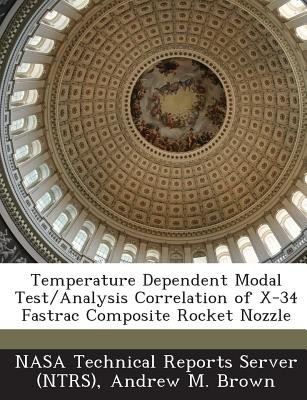
- We will send in 10–14 business days.
- Author: Andrew M Brown
- Publisher: Bibliogov
- ISBN-10: 1287290736
- ISBN-13: 9781287290735
- Format: 18.9 x 24.6 x 0.1 cm, minkšti viršeliai
- Language: English
- SAVE -10% with code: EXTRA
Temperature Dependent Modal Test/Analysis Correlation of X-34 Fastrac Composite Rocket Nozzle (e-book) (used book) | bookbook.eu
Reviews
Description
A unique high temperature modal test and model correlation/update program has been performed on the composite nozzle of the FASTRAC engine for the NASA X-34 Reusable Launch Vehicle. The program was required to provide an accurate high temperature model of the nozzle for incorporation into the engine system structural dynamics model for loads calculation; this model is significantly different from the ambient case due to the large decrease in composite stiffness properties due to heating. The high-temperature modal test was performed during a hot-fire test of the nozzle. Previously, a series of high fidelity modal tests and finite element model correlation of the nozzle in a free-free configuration had been performed. This model was then attached to a modal-test verified model of the engine hot-fire test stand and the ambient system mode shapes were identified. A reduced set of accelerometers was then attached to the nozzle, the engine fired full-duration, and the frequency peaks corresponding to the ambient nozzle modes individually isolated and tracked as they decreased during the test. To update the finite-element model of the nozzle to these frequency curves, the percentage differences of the anisotropic composite moduli due to temperature variation from ambient, which had been used in the initial modeling and which were obtained by small sample coupon testing, were multiplied by an iteratively determined constant factor. These new properties were used to create high-temperature nozzle models corresponding to 10 second engine operation increments and tied into the engine system model for loads determination.
EXTRA 10 % discount with code: EXTRA
The promotion ends in 22d.04:19:31
The discount code is valid when purchasing from 10 €. Discounts do not stack.
- Author: Andrew M Brown
- Publisher: Bibliogov
- ISBN-10: 1287290736
- ISBN-13: 9781287290735
- Format: 18.9 x 24.6 x 0.1 cm, minkšti viršeliai
- Language: English English
A unique high temperature modal test and model correlation/update program has been performed on the composite nozzle of the FASTRAC engine for the NASA X-34 Reusable Launch Vehicle. The program was required to provide an accurate high temperature model of the nozzle for incorporation into the engine system structural dynamics model for loads calculation; this model is significantly different from the ambient case due to the large decrease in composite stiffness properties due to heating. The high-temperature modal test was performed during a hot-fire test of the nozzle. Previously, a series of high fidelity modal tests and finite element model correlation of the nozzle in a free-free configuration had been performed. This model was then attached to a modal-test verified model of the engine hot-fire test stand and the ambient system mode shapes were identified. A reduced set of accelerometers was then attached to the nozzle, the engine fired full-duration, and the frequency peaks corresponding to the ambient nozzle modes individually isolated and tracked as they decreased during the test. To update the finite-element model of the nozzle to these frequency curves, the percentage differences of the anisotropic composite moduli due to temperature variation from ambient, which had been used in the initial modeling and which were obtained by small sample coupon testing, were multiplied by an iteratively determined constant factor. These new properties were used to create high-temperature nozzle models corresponding to 10 second engine operation increments and tied into the engine system model for loads determination.


Reviews